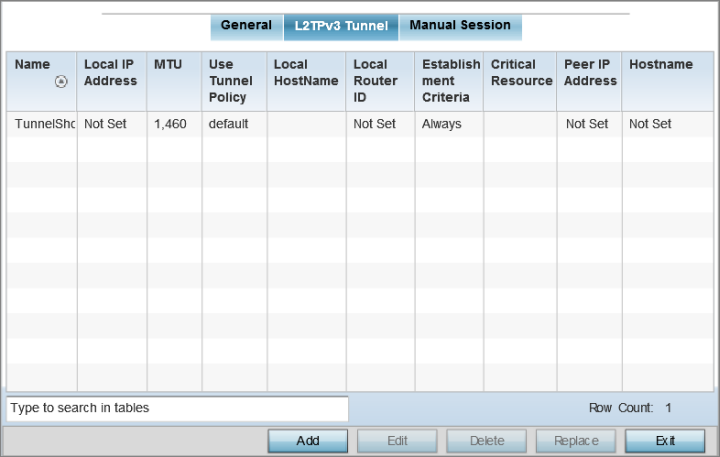To override a profile's L2TPv3 tunnel configuration at the device level:
The L2TPv3 main screen displays. This screen lists existing L2TPv3 tunnel configurations.

|
Name |
Displays the name of each listed L2TPv3 tunnel assigned upon creation. |
|
Local IP Address |
Lists the IP address assigned as the local tunnel end point address, not the interface IP address. This IP is used as the tunnel source IP address. If this parameter is not specified, the source IP address is chosen automatically based on the tunnel peer IP address. |
|
MTU |
Displays the MTU size for each listed tunnel. The MTU is the size (in bytes) of the largest protocol data unit that the layer can pass between tunnel peers. |
|
Use Tunnel Policy |
Lists the L2TPv3 tunnel policy assigned to each listed tunnel. |
|
Local Hostname |
Lists the tunnel specific hostname used by each listed tunnel. This is the hostname advertised in tunnel establishment messages. |
|
Local Router ID |
Specifies the router ID sent in the tunnel establishment messages. |
|
Establishment Criteria |
Specifies tunnel criteria between two peers. |
|
Critical Resource |
Specifies the critical resource that should exist for a tunnel between two peers to be created and maintained. Critical resources are device IP addresses or interface destinations interpreted as critical to the health of the network. The critical resource feature allows for the continuous monitoring of these defined addresses. A critical resource, if not available, can result in the network suffering performance degradation. |
|
Peer IP Address |
Lists the IP address of the remote peer. |
|
Host Name |
Lists the tunnel specific hostname used by the remote peer. |